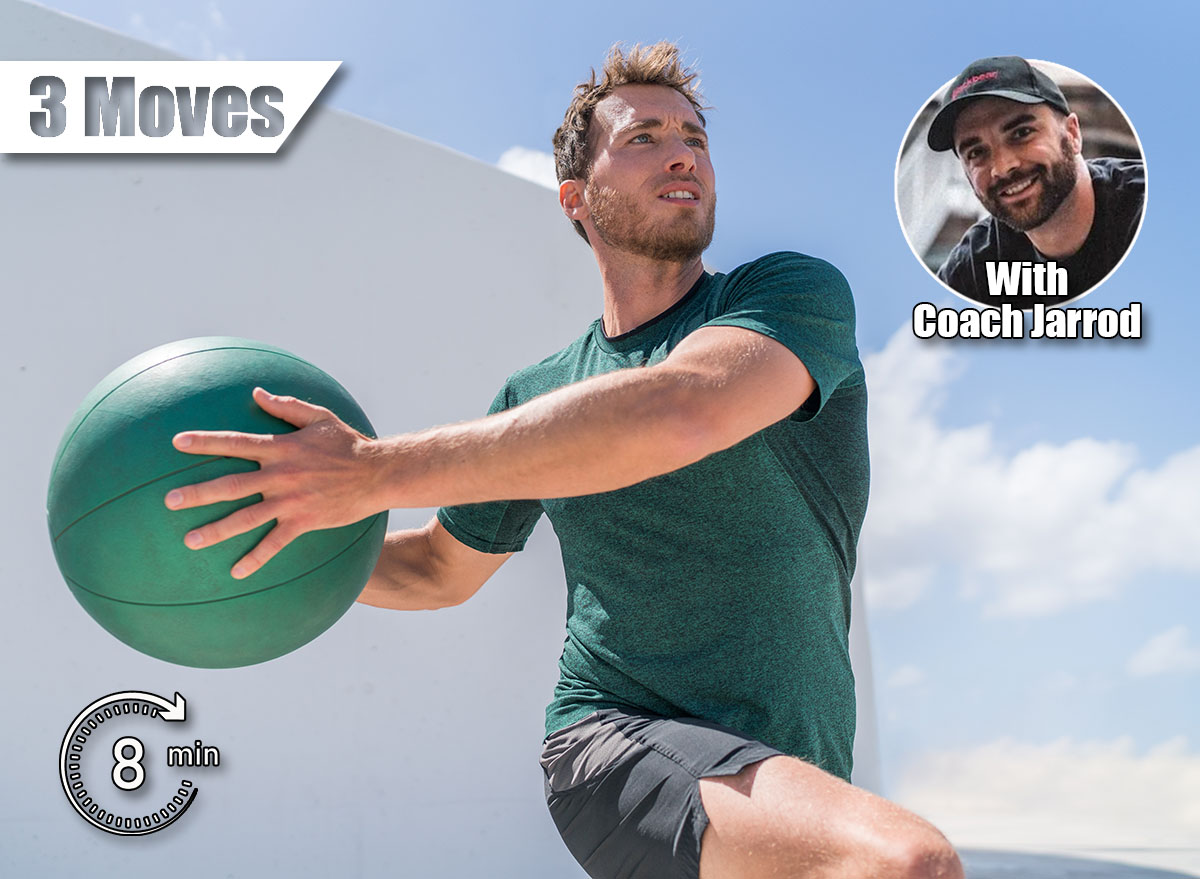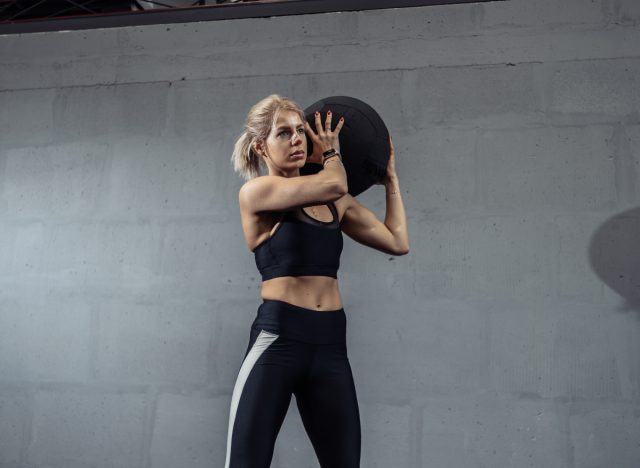The 3 Core Moves That Make You Feel Decades Younger After 50

Your core is what drives your balance, stability, and your ability to move through life, especially after 50. When it’s strong, you feel capable, steady, and ready for anything. When it’s neglected, even simple tasks like bending, lifting, or twisting can become challenging.
After 50, keeping your core strong is one of the smartest investments you can make in your body. It helps protect your spine, supports better posture, and keeps you moving with confidence. A resilient core can make everyday life feel easier and give you the freedom to keep doing the activities you love. And, believe it or not, the right exercises can build strength where you need it most while improving the way your entire body works together.
Here are three powerful core moves that will help you move better, feel stronger, and stay active for years to come.
3 Core Moves That Make You Feel Younger After 50
Core Move #1: Woodchops

Woodchops are a dynamic, rotational exercise that strengthens your entire core, especially your obliques. After 50, rotational strength becomes increasingly essential for maintaining mobility and protecting your spine during twisting movements. This exercise mimics real-life actions like reaching, lifting, and turning, making it one of the most functional core moves you can do. It also improves power through your core, which can enhance everything from sports performance to simple daily tasks.
Muscles Trained: Obliques, rectus abdominis, transverse abdominis, shoulders, hips
How to Do It:
- Stand with your feet shoulder-width apart, holding a cable handle or medicine ball above one shoulder.
- Engage your core and slightly bend your knees.
- Rotate your torso diagonally across your body as you bring the weight down toward the opposite hip.
- Keep your arms extended but slightly bent as you move.
- Slowly return to the starting position with control.
Recommended Sets and Reps: Perform 3 sets of 10 to 12 reps per side. Rest for 45 to 60 seconds between sets.
Best Variations: Half-kneeling woodchops, resistance band woodchops, medicine ball rotational throws
Form Tip: Keep your core engaged and avoid letting your lower back twist excessively. The movement should come from your torso, not your arms.
Core Move #2: Pallof Press

The Pallof press is one of the best anti-rotation exercises for building deep core stability. Instead of moving through a twist, this exercise challenges your core to resist rotation, which is critical for spinal health and functional strength. It strengthens the muscles that protect your lower back and improves posture, making it an excellent choice for anyone over 50 who wants a safer, stronger midsection.
Muscles Trained:
Transverse abdominis, rectus abdominis, obliques, glutes
How to Do It:
- Anchor a resistance band or cable at chest height and stand perpendicular to it.
- Hold the handle or band with both hands at your chest.
- Step away from the anchor point to create tension in the band.
- Press your hands straight out in front of you, resisting the pull of the band.
- Hold for a brief pause, then return to your chest.
Recommended Sets and Reps: Knock out 3 sets of 12 to 15 reps per side. Rest for 45 to 60 seconds between sets.
Best Variations: Half-kneeling Pallof press, overhead Pallof press, Pallof press with step-outs
Form Tip: Keep your hips square and your core tight. Avoid leaning toward the band as you press.
Core Move #3: Suitcase Carry
The suitcase carry builds real-world core strength by forcing your body to stabilize under an uneven load. Carrying weight on one side works your obliques, lower back, and hips while improving grip strength and posture. For people over 50, this move helps reinforce stability in walking, lifting, and other everyday activities, reducing the risk of falls or back injuries.
Muscles Trained: Obliques, erector spinae, rectus abdominis, forearms, glutes
How to Do It:
- Pick up a dumbbell or kettlebell with one hand, letting it hang naturally at your side.
- Stand tall with your shoulders back and feet hip-width apart.
- Engage your core and walk slowly in a straight line.
- Maintain an even posture without leaning to one side.
- Turn around and walk back to your starting point.
Recommended Sets and Reps: Knock out 3 sets of 30 to 40 seconds per side. Rest for 45 to 60 seconds between sets.
Best Variations: Farmer’s carry, offset double carry (different weights in each hand), suitcase carry with march.
Form Tip: Keep your shoulders level and your core braced. Avoid letting the weight pull you off balance.
Best Tips for Building Core Strength After 50
Building a stronger core after 50 is about creating habits that help your body stay strong, stable, and resilient for the long haul. Whether you’re just starting or refining what you already do, small changes can make a big difference in how you feel and move. Consistency, smart training, and attention to recovery are key to keeping your core working at its best.
Here’s how to make it happen:
- Train your core at least 2 to 3 times per week: Short, focused sessions are enough to build strength and stability without overdoing it.
- Mix in both movement and anti-movement exercises: Combine rotational moves like woodchops with anti-rotation work like Pallof presses to train your core from every angle.
- Prioritize good posture throughout the day: Stand tall, keep your shoulders back, and engage your core during daily activities to reinforce strength outside the gym.
- Incorporate carries into your routine: Exercises like suitcase and farmer’s carries build real-world core strength while improving grip and overall stability.
- Don’t skip recovery: Give your muscles time to repair with rest days, stretching, and mobility work to keep your core healthy and ready for more.
- Progress slowly and safely: Increase resistance or duration over time rather than rushing. Steady improvements lead to lasting results.